The Best Ways To Prevent Running Out Of Heating Fuel This Winter

Many homeowners utilize heating oil for home heating during winter. One of this season’s biggest tasks is checking your oil level status and calling with enough time for a heating fuel delivery. Heating oil is crucial in your home, but many homeowners still forget this essential system upkeep.
Oil tanks usually get lost in the bustle of the winter season. Many plan family outings and ski trips and others get caught up dealing with snow. This time of the year is also winter’s harshest period, which is when it is most critical to have a full oil tank. With all the busyness, even the most responsible homeowners run out of fuel.
Some of the likely causes that contribute to a depleted fuel tank include:
- Failing to track your oil levels throughout the year
- Stolen fuel
- Lacking the budget to schedule an oil delivery
- A tank system leak
Regardless of the reason, it is frustrating to run out of fuel oil. It can also significantly affect your well-being and daily activities. Preventing an empty oil tank doesn’t have to be hard. When you understand the risks that come with running out of fuel, you can take simple steps to avoid it from happening and ensure your tank stays full when you need it most.
Reasons To Prevent Running Out of Heating Oil
Contents
- 1 Reasons To Prevent Running Out of Heating Oil
- 2 Ways to Prevent Running Out of Oil
- 3 What You Should Do If You Run Out of Oil
- 4 For Superior Heating Oil Deliveries, Call Townsend Energy
It may seem like it isn’t a big deal that you lack preventative measures if your tank has never run out of oil before. However, the most careful homeowners can still sometimes forget to book a heating fuel delivery on time. This is a problem that’s more harmful than it may seem.
Some pressing reasons make buying oil on time necessary. Besides the lack of hot water and the inconvenience of a cold home, listed below are several risks that can happen if you don’t take preventative measures to keep your oil tank full:
Related Article: What Boiler Size Do I Need?
Added Heating Oil Costs

The most common time homeowners run out of heating oil is the middle or end of winter. The bad news is that this period is also when the heating oil prices are at their highest. You may have to pay the highest prices of the heating oil season when you run out of fuel between October and March. This can rack up to hundreds of additional dollars.
You will not only pay more for the oil, but you’ll spend more on emergency delivery as well. Small refills throughout the year cost significantly less overall than emergency services.
Sludge Buildup
Debris and sludge are commonly found on the base of heating oil tanks. These usually don’t cause system damage unless your tank runs empty.
Low oil levels mean the sludge gets pulled into the supply line with the remaining oil. It can clog the line, or go through a filter that can become partially or completely clogged. Blocked fuel lines or filters cause a significant drop in efficiency or a complete system shutdown. These problems require a professional to resolve them.
Related Article: How Does An Oil Heating System Work?
Oil-Fired Heating System Reset
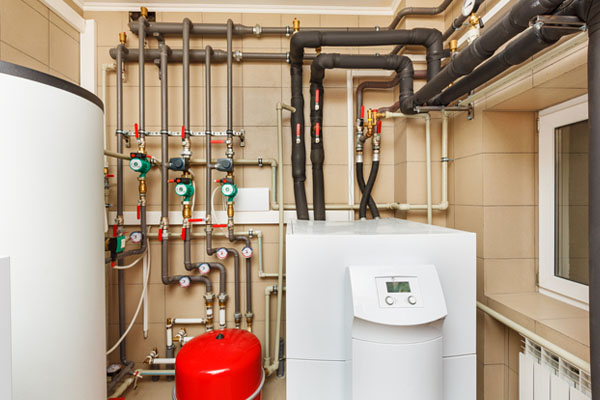
There are times when resetting your heating oil system after a run-out requires only a simple press of a button. However, you may need to reset the pilot light if it goes off.
According to the law, a pilot reset needs to be done by a professional. They will bleed the oil line and replace clogged filters. This can cost you hundreds of dollars more than a simple oil heating fuel delivery.
Ways to Prevent Running Out of Oil
Many risks are linked with running out of heating oil, so don’t wait and ensure you are protected. Take the preventative steps to ensure your heating oil tank has oil all year.
The general rule in the industry is that your oil tank should be at least 1/3 full at all times. This doesn’t mean you must constantly go to and from your tank for manual oil level checks. Some services and technologies can help you do so without the extra time and stress associated with manual monitoring. Here are some of them:
Related Article: How to Read Your Heating Oil Tank Gauge
Automatic Delivery
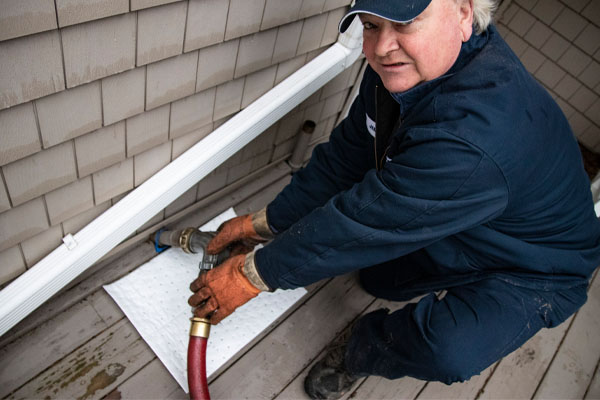
Automatic delivery services mean you never have to worry about running out of oil again.
The best part of automatic delivery is that you don’t have to do any work. There is no need to constantly check your tank and calculate when to book your next fill-up. An automatic delivery program allows you to relax as your oil company will do all the work for you.
Signing up for automatic delivery translates to your oil supplier tracking your oil consumption using a non-invasive technology. It measures your estimated heating oil use by utilizing simple information about your home and family and combining them with calculated HDD or heating degree days. HDD measures how much energy is needed for home heating per the exterior temperature.
Your oil company calculates the HDD with your home’s square footage, previous data on your heating needs, and fuel tank size. This allows them to determine when your tank is at 1/3 full accurately. They will then contact you directly to book a delivery.
Related Article: Is It Possible To Fill The Heating Oil Tank With Diesel?
Pros of Automatic Delivery
- Automatic delivery is the most popular method for most heating oil companies. It offers a high success rate in keeping fuel tanks from running empty.
- These deliveries offer the highest savings out of all preventative options. Most oil suppliers reward customers with discounted rates when they sign up for the service, which can add up significantly.
- Automatic deliveries are based on your heating history, and oil suppliers deliver per your unique needs. This way, you aren’t sold oil you don’t want or need.
- Non-intrusive calculation strategies ensure that there is no worry regarding invasive tank monitoring software.
Cons of Automatic Delivery
- This system doesn’t consider unexpected heat increases. Suppose your extended family is visiting over the holidays. In that case, so many people are using more hot water. You may also have gone on vacation and didn’t use as much heating as usual. If so, you’ll have to manually tell your oil company so they can make delivery schedule adjustments.
- You will likely need to commit to an agreement for a set period with a single supplier to get the most accurate results. This means you can’t shop around for different costs throughout the year.
Related Article: How Bioheat® Heating Oil Accelerates Decarbonization Of U.S. Energy
Tank Monitoring Apps and Smart Meters
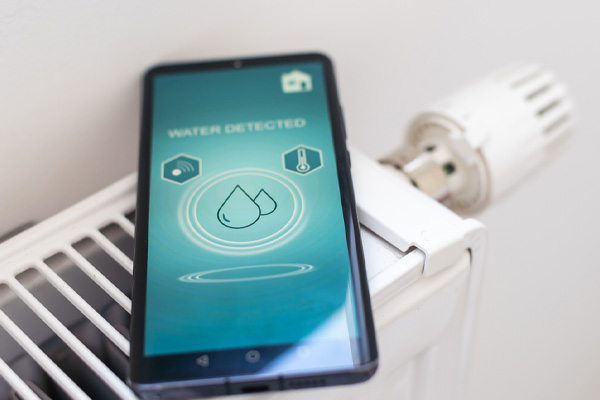
Smart technology can be found in almost every possible industry, such as smart security systems and thermostats, cookware, and garbage bins. Technologically advanced options are available for all parts of your home. This technology has also made its way to the heating oil industry with smart oil tank meters.
You can instantly monitor your home’s oil levels, usage, and heating bills from virtually anywhere with smart software. This tracking method sends data via a sensor attached to your oil tank to your smartphone or tablet.
Pros of Smart Meters
- Many systems have built-in alarms that will alert you of potential oil theft.
- Most smart systems notify you the moment oil levels get low so you can call your supplier on time.
Cons of Smart Meters
- Smart meters are one of the costly oil tracking options. A smart tank monitoring system is usually priced around $100 or more.
- Media outlets have reported errors from smart monitoring software. They described rare situations wherein electricity monitoring systems are 50% inaccurate. Most smart oil monitoring software users still find the system accurate, but you should still consider these rare inaccuracies.
- Most smart meters only let you know of low oil levels. You need to notify your oil supplier yourself. Call them right away to ensure you don’t run out of oil.
Installing a smart meter isn’t a DIY project. It needs to be done by a professional. The good news is that Townsend Energy can install smart meters during your annual heating system maintenance appointment. Contact us today if you haven’t booked an oil heating system tune-up.
Related Article: What You Should Know About Condensation In Home Oil Tanks
Local Tank Monitors
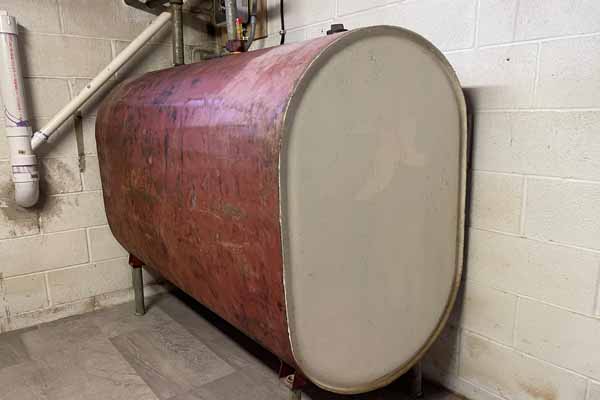
Local tank monitoring software is a great alternative if you want to check your tank levels from your home but don’t have a smartphone or similar device to connect to a smart meter.
Like smart meters, local tank monitors are also equipped with a transmitter that can be easily installed on your oil tank. This sensor transmits a local read-out to a monitor plugged into your home’s electrical sockets.
Pros of Local Tank Monitors
- Most monitors are easy to install. You just need to put the sensor in the tank and connect the monitor to an electrical socket. This allows non-smartphone users to enjoy the benefits of a local tank monitoring system.
- The system alerts you through the monitor when there are low oil levels. This way, you don’t have to guess when to call your oil supplier.
- Local tank monitors offer higher accuracy than standard mechanical float gauges. This device can replace gauges and dipsticks completely.
Cons of Local Tank Monitors
- Some monitors can be plugged anywhere in your home, but many need to be placed within a specific distance from the tank. This gives you less freedom compared to automatic delivery services or smart meters. Some mobile monitors are battery-operated, but most require being plugged into an electrical outlet, so they lack mobility.
- Tank transmitters and monitoring systems have nearly the same price as smart monitoring software. You’ll also need to shell out about $100 to get a local tank monitor.
- Local tank monitors typically alert you when there are low oil levels in your tank, but you still need to call your oil provider to receive heating fuel delivery.
Alert Systems
If you are looking for a system that notifies you when your oil levels are low without the bells and whistles of a local or smart monitoring system, an oil tank alert system may be for you.
An alert system doesn’t require you to pay for additional data or settings. You only need to install a gauge onto your oil tank, which alerts your receiver when you have low oil levels. The receiver will beep or flash when the oil reaches a certain level, so you know when to call your oil supplier.
Related Article: Alternative Energy: How Biofuels Reduce Carbon Footprints
Pros of Alert Systems
- Alert systems are perfect for homeowners who aren’t familiar with how to use smart technology. The receiver is a simple device with no screen or complex user interface. It only alerts you when oil levels are low without extra information.
- Their simplicity makes alert systems quite a cheap alternative compared to other tank monitoring systems. A unit can be purchased at a relatively low price.
- Many receivers use batteries to operate and can be installed anywhere throughout your home.
Cons of Alert Systems
- Alarm systems let you know when oil levels are low but can’t give you vital data regarding oil consumption. Knowing your daily and seasonal oil usage can help determine where you may be wasting money and what can be done to minimize your heating expenses. Unfortunately, alert systems don’t monitor this information.
- These systems, like other forms of tank monitoring, don’t alert your oil supplier when your oil levels are low. You will have to make a call so your tank stays filled.
Related Article: How Much Heating Oil Will I Use A Day?
Manually Checking Tank Levels
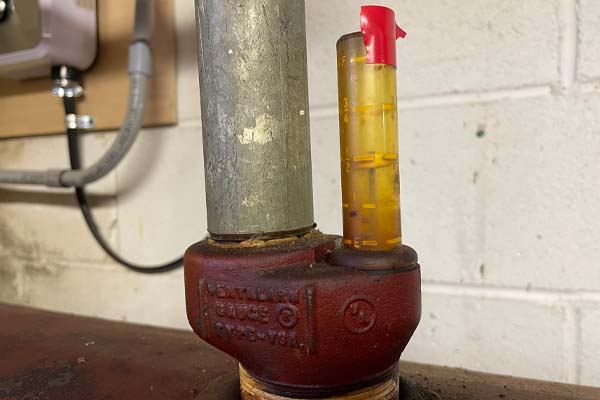
Your budget may prevent you from signing up for automatic delivery services or buying a monitoring system. However, you still need to conduct oil level checks so it doesn’t run out. Experts discourage manual monitoring of oil levels, but you can use it as a last resort. Examine the gauge and call your oil supplier when your tank levels are low.
Use a dipstick to know your oil tank level. Make sure to call your oil provider and book a heating fuel delivery before the oil level reaches 1/3 full so you don’t run out of fuel or cause tank damage.
Related Article: Tips For Choosing A Fuel Oil Company
Pros of Manual Oil Monitoring
- Manual monitoring may seem like the most cost-effective alternative at first. However, you may have to pay more as time passes, especially if you forget to track your oil levels throughout the year.
Cons of Manual Oil Monitoring
- Even highly responsible homeowners can still forget about scheduling a heating fuel delivery, especially during the hustle and bustle of the winter season. Manual monitoring depends on you to track your oil levels frequently, unlike most prevention strategies that alert you when you have low oil levels. Forgetting to check your tank may mean calling for an emergency fill-up service and expensive repairs.
- This method is the most inconvenient, especially if your tank is installed outdoors. This is because you need to stand outside in the wind and snow to check your oil tank during the season’s coldest days.
Related Article: What Size Oil Tank Do I Need For My Home?
What You Should Do If You Run Out of Oil
If your tank is already empty, preventative measures can’t help you with refilling your tank. You should take the steps so this problem doesn’t recur, but you also need to do something immediately so that your home heating is restored.
Here are several tips to aid you on what to do if your heating oil runs out entirely:
- Call for an emergency delivery service: Emergency heating fuel delivery services provide you with a needed heating fuel delivery in less than 24 hours of your order request.
- Use a substitute to heat your home: If you run out of heating oil, use diesel or kerosene to hold you over until the arrival of the emergency delivery service. Fill a gasoline-safe container with around 10 gallons of fuel at the closest gas station. Another option is to use a fireplace or space heater for home heating until more fuel arrives.
- Insulate your surroundings: Ensure extra heat is trapped inside your home while waiting for oil to arrive. Close all windows and doors tightly, and weatherstrip wherever possible to reduce your home’s heat loss.
For Superior Heating Oil Deliveries, Call Townsend Energy

Townsend Energy is proud to be a trusted, affordable heating oil supplier in the area. We offer different delivery plans and financing options. This way, you can customize your oil deliveries by choosing which option works best for you. By working with us, you can expect affordable oil prices and fast and reliable fuel deliveries.
Also, when you need maintenance service or repair for your heating system, our professionally certified technicians can help you. Our home heating services aim to improve efficiency and comfort, while reducing your energy costs. Call Townsend Energy today to schedule your appointment.
Contact us now at (800) 722-4101 to find out more! Click the link to view our service area.
